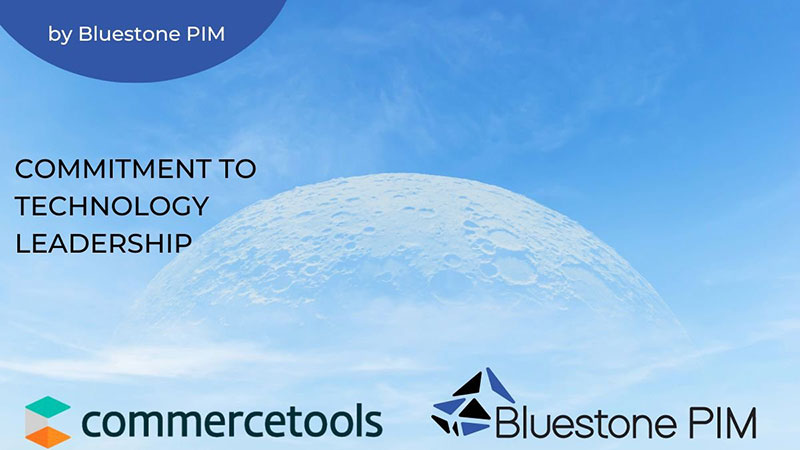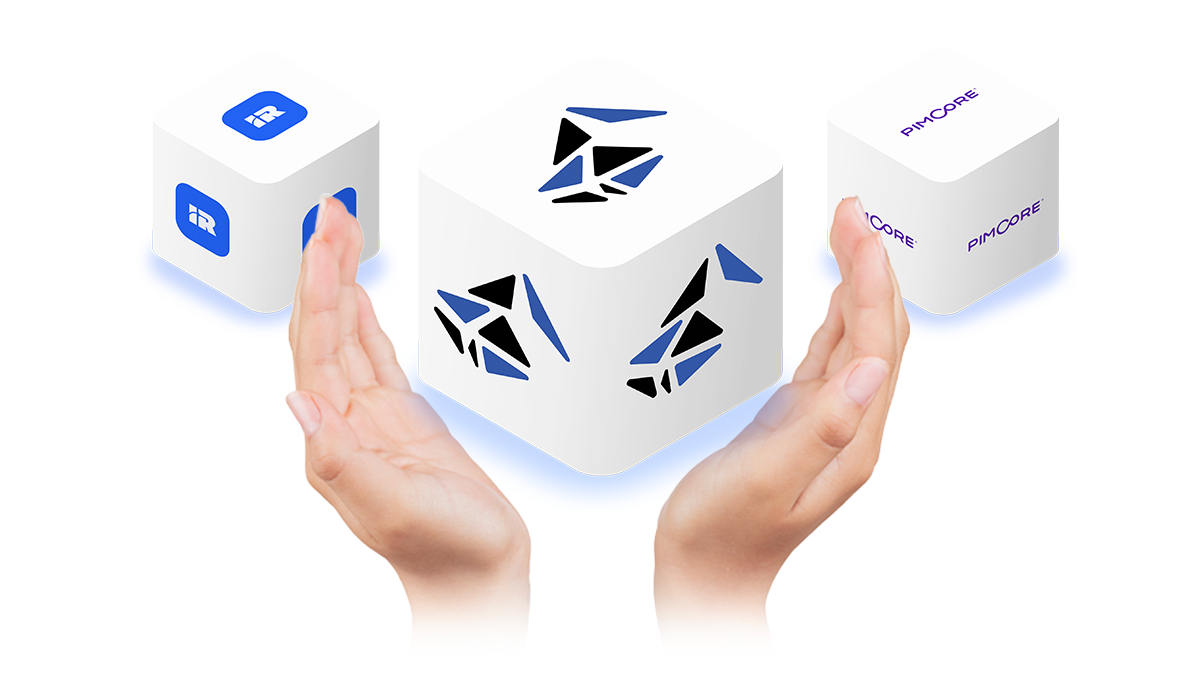Headless Commerce: A Non-Scary Guide for Beginners
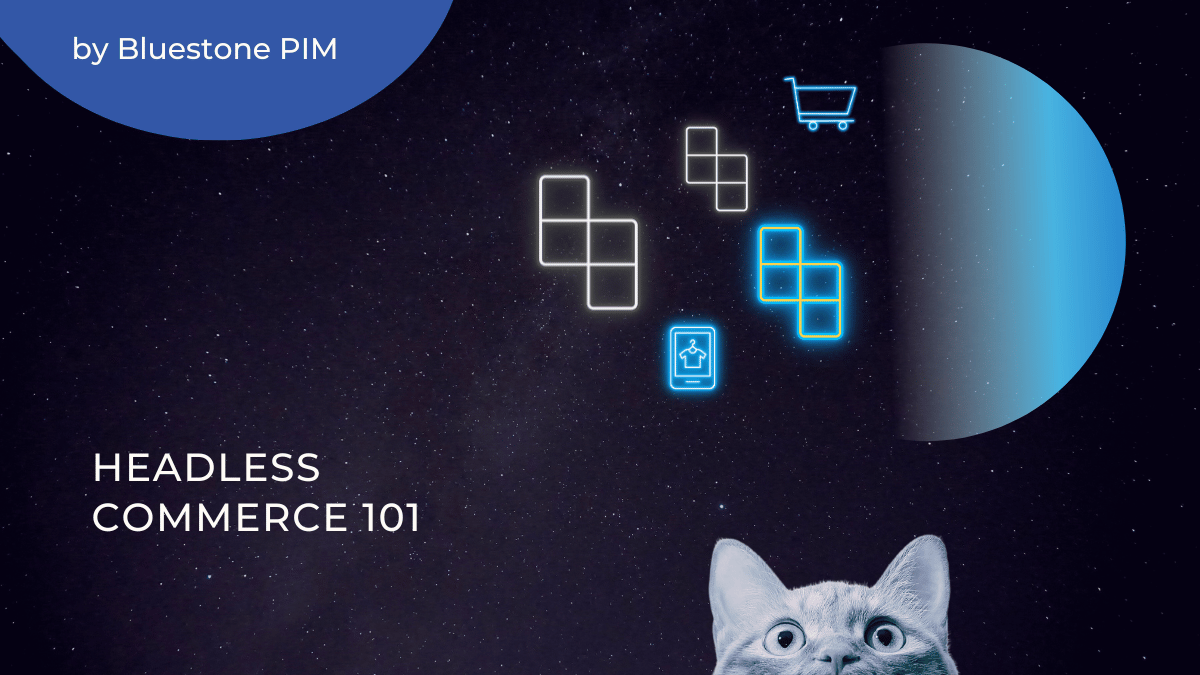
Table of Contents
- What is headless commerce?
- Differences between headless and other architectures
- How does headless architecture work in eCommerce?
- 9 pivotal benefits of adopting headless commerce
- #1 Smooth workflow with API-driven approach
- #2 Channel-agnostic flexibility
- #3 Agile development and innovation
- #4 Seamlessly integrate with third-party services
- #5 More personalized customer experiences
- #6 Faster time-to-market
- #7 Always up-to-date thanks to accelerated development cycles
- #8 Future-proofing
- #9 Better content management functionality
- 5 challenges of starting with headless commerce
- Examples of headless commerce platforms from top brands
- Final thoughts
New technologies are increasingly reshaping our shopping experiences, making them seamless and more entertaining. Smart mirrors in changing rooms suggest new outfits to try. Social media features and virtual assistants like Amazon’s Alexa help make purchases faster. Each of these trends has already grown into a separate branch of commerce, like social commerce or voice commerce.
We live in the age of omnichannel. In today's fast-paced digital landscape, retailers constantly seek innovative ways to meet ever-changing customer expectations. One way to achieve this and deliver exceptional shopping experiences is to adopt a headless commerce approach.
At first glance, the headless term doesn’t sound like a pleasant undertaking, doesn’t it? But in the eCommerce technology world, headless means something utterly cool because it provides great flexibility for businesses.
The headless commerce market currently has a value of $751.6 million, and it’s expected to grow at a 22.1% CAGR in the next ten years, reaching $5,528.5 million by 2032. This technology is visibly spinning out from niche to mainstream.
In this comprehensive guide, you will learn more about the main principles and benefits of headless commerce and why more and more retailers are choosing this approach to transform their digital commerce stack. Let's start with the headless commerce definition.
What Is Headless Commerce?
Headless commerce is a modern approach to building and delivering digital experiences that offers flexibility, scalability, and improved performance.
In the structure of every eCommerce platform, there is a front-end presentation layer (“the head”) with all visual items such as text colors and images, and there is a back-end layer that includes business logic and functionalities like pricing, security, checkout, etc.
In traditional web architecture, the front-end and back-end are tightly connected, while headless architecture decouples these components, allowing them to function independently.
Instead of relying on server-side rendering, the headless commerce system utilizes Application Programming Interfaces (APIs) to deliver content and data to any type of device or channel, such as websites, mobile apps, smart devices, and more.
This decoupling empowers developers to choose the most suitable technologies for each component, enables faster development cycles, and facilitates seamless integration with various platforms.
With headless architecture, organizations can create engaging digital experiences that are easily adaptable, future-proof, and tailored to the unique needs of their target audience.
Differences Between Headless and Other Architectures
MACH, monolith, composable, microservices — are you confused with all these terms and how they are any different from one another?
If yes, don't worry; you are not alone. Here is an easy-breezy explanation of these commonly used architectures.
Headless vs. Traditional/Monolith
You already know the differences between traditional and headless commerce because the first one is the main reference point, which explains why headless is such a revolutionary approach. In traditional architecture, the front-end and back-end layers of an application are one block. That means that the entire app is built as a single, self-contained unit (that’s why this architecture is also called a monolith).
In comparison, headless architecture separates the front-end and back-end components and allows them to function independently.
In a monolithic architecture, making changes to one part of the application can affect the entire application. The headless architecture allows for easier scalability and flexibility, making it easier to work on specific parts of the application.
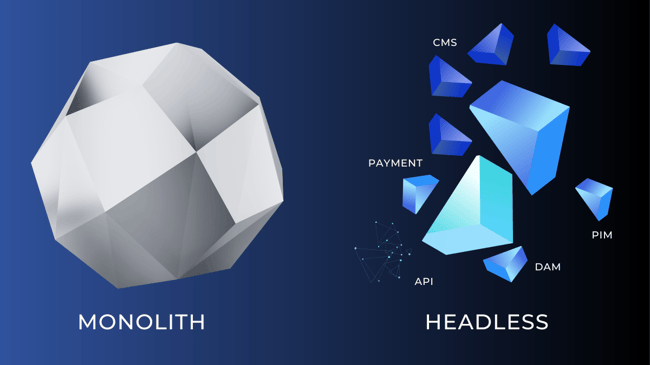
Headless vs. Decoupled
Decoupled architecture is similar to headless architecture, but it still has some distinct differences. In decoupled architecture, the back-end is still tightly coupled with the front-end, although they are separated. This means that both layers still communicate with each other.
In headless architecture, there is no predefined way of communicating. The back-end simply provides data to the front-end through APIs, making the entire architecture more flexible and easier to work with.
Headless vs. Microservices
Microservices architecture is a type of architecture where the application is divided into multiple smaller services that can function independently. The front-end can then call the services it needs through APIs.
Headless architecture, on the other hand, separates the front-end and back-end completely. The back-end is built as a set of APIs that deliver data to any front-end that needs it. The key difference is that the entire back-end is still one unit, which makes it easier to manage, update, and scale the application.
Headless vs. Composable
The composable architecture consists of pre-built modules that can be arranged and assembled to create an application. In a composable architecture, the modules are tightly integrated, creating a more composed application.
Headless architecture is different in that it separates the front-end and back-end entirely. The back end is simply a set of APIs, and any front-end that wants to use them can do so. These front-ends can be entirely different from each other, and developers can build them using different tools and technologies.
However, headless and composable architecture can be complementary to each other, as their components are based on the same MACH architecture (Microservices-based, API-first, Cloud-native SaaS, Headless).
Basically, headless commerce architecture might be a launchpad for composable commerce.
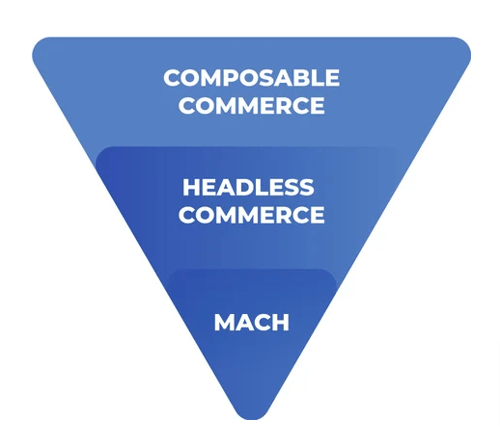
As John Williams, CTO at Amplience and creator of the “Going Headless with John” channel, states, great headless commerce platforms are multi-tenanted and cloud-native, and they are key enablers for composable commerce.
How Does Headless Architecture Work in eCommerce?
Headless commerce is essential to bringing more agility and scalability to eCommerce. In headless architecture, the back-end deals with product data and order processing, but the presentation layer is entirely separated. This leads to a better and more personalized user experience.
Because headless architecture allows businesses to utilize APIs, it takes customer data and makes the process of reaching a customer with the right message, offer, or product much easier. Personalization is the future of eCommerce, and headless commerce is a step forward in that direction with readily available data.
Speaking of APIs, the headless model can integrate with data sources that are not even in-house, allowing the company to pull third-party data and translate that into sales, marketing, and user experience, among other metrics. This modern architecture is enabling businesses to easily collaborate with partners and vendors and add new revenue streams, beyond the limits of traditional web architecture.
9 Pivotal Benefits of Adopting Headless Commerce
According to the State of Commerce report by Salesforce, 77% of companies with headless architecture agree it gives them increased agility, such as by allowing them to make changes to their digital storefront faster. Moreover, they are likely to attribute their companies’ overall success to digital commerce (58%) versus non-headless organizations (37%).
Headless commerce solutions offer several benefits for modern retailers. Here are the main nine things that make headless a game-changer.
Headless commerce has already become mainstream. The most successful retail businesses are using it right now.
Headless architecture gives retailers great agility and endless customization to create content-led online stores that will gain new customers and drive meaningful engagements.
Christopher Holley, Global Director of ISV Partnerships at commercetools
#1 Smooth Workflow with API-Driven Approach
At the heart of headless commerce lies its API-driven nature. APIs (Application Programming Interfaces) enable seamless communication between the front-end and back-end systems, facilitating data exchange, transaction processing, and content delivery.
This allows eCommerce businesses to effortlessly retrieve product information, update inventory, and process orders across various touchpoints.
#2 Channel-Agnostic Flexibility
Headless commerce liberates businesses from the constraints of traditional monolithic systems. It empowers retailers to deliver consistent and immersive shopping experiences across multiple channels, including websites, mobile apps, voice assistants, IoT devices, and more.
Each channel can have its own customized front-end, optimized for the specific user interface and user experience requirements.
#3 Agile Development and Innovation
Headless commerce enables faster development and deployment cycles. The separation of front-end and back-end components allows teams to work independently, making updates and introducing new features without disrupting the entire system.
This agility enables retailers to iterate quickly, respond to market trends, and stay ahead of the competition.
#4 Seamlessly Integrate with Third-Party Services
Headless commerce also allows for seamless integration with third-party services, such as social media platforms, messaging apps, and other tools that enhance the customer experience.
For example, you can easily integrate your online store with popular payment gateways and shipping providers, making the checkout process faster and more convenient for your customers. This also saves your time and resources as you won't need to develop these integrations from scratch.
#5 More Personalized Customer Experiences
One of the biggest advantages of a headless commerce solution is that it enables online businesses to provide more personalized experiences for their customers at lightning speed. By decoupling the front-end and back-end of your eCommerce platform, you gain more flexibility in terms of designing the customer interface.
This means that you can customize the look and feel of your online store and cater to each customer's unique preferences.
Overall, it leads to a more engaging and memorable experience that can boost customer loyalty and increase conversions.
The shift towards headless platforms, which we have been observing in the last ten years, is a result of the changing needs of retailers in the current digital landscape. More and more retail companies are now choosing to move away from traditional, monolithic platforms and towards solutions based on headless architecture to become more agile and future-ready.
Headless platforms offer businesses the ability to integrate with a wide range of third-party services and platforms through APIs to create a seamless and personalized customer experience. With this level of flexibility, retailers can create a truly omnichannel experience for their customers.
Christopher Holley, Global Director of ISV Partnerships at commercetools
#6 Faster Time-to-Market
Traditional eCommerce platforms often require extensive customization to meet the unique needs of a business. This can take months or even years to complete, delaying your time-to-market and potentially stunting your growth.
With headless commerce, you can bypass the need for customization and choose from a range of pre-built APIs that can be easily integrated into your platform. This allows you to launch your online store faster and start generating revenue sooner.
#7 Always Up-to-Date Thanks to Accelerated Development Cycles
Headless commerce allows for faster development and deployment cycles. With the ability to independently update the front-end and back-end components, retailers can iterate quickly, roll out new features, and respond rapidly to market trends.
#8 Future-Proofing
Additionally, the headless architecture supports scalability by easily integrating with emerging technologies like Internet of Things (IoT) devices and virtual reality. By future-proofing their eCommerce infrastructure, retailers can adapt to changing consumer preferences and embrace new sales channels seamlessly.
By embracing this innovative approach, retailers can create a competitive edge and meet the evolving needs of their customers in the fast-paced eCommerce industry.
#9 Better Content Management Functionality
Lastly, headless commerce brings an array of content management benefits that can enhance your online business's overall functionality. By using a headless content management system (CMS), you can create and manage content across multiple platforms and devices, as well as customize content based on customer behavior.
What's more, you can integrate CMS with the headless Product Information Management (PIM) platform, and as a result, send your product data like (product descriptions, images, catalogs, video links, product relations, or attributes) directly into the CMS system.
This not only boosts engagement with your customers but also improves your SEO rankings and drives more traffic to your site.
5 Challenges of Starting with Headless Commerce
Getting started with headless is totally worth it if you want to speed up the growth of your retail business, yet when you embark on the path, you must also face challenges that may arise.
Here are the most common ones, mainly related to the technical DIY approach and configurability of solutions.
Be prepared for them and invest in certain assets so as not to lose your head during the process ;)
#1 Technical Complexity
One of the key challenges with headless commerce is the level of technical expertise required to implement it effectively. In a traditional eCommerce setup, everything is neatly packaged into a single platform, which means that non-technical stakeholders can easily manage the store.
However, with headless commerce, the underlying architecture becomes more complex, requiring developers to be highly proficient in technologies like APIs, microservices, and serverless computing.
Additionally, developers need to be skilled at integrating different systems and platforms together, which can be a daunting task. To overcome this challenge, businesses should invest in training and hiring skilled developers who can build and manage headless eCommerce architectures effectively.
#2 Advanced Scalability
Another challenge associated with headless commerce is scalability. While headless commerce gives businesses the flexibility to create custom front-end experiences, it also means that there are more moving parts to manage. As the number of integrations and microservices increases, so does the complexity of the system. This can make scaling the store a challenge.
To mitigate this issue, it is essential to have a good understanding of the store’s traffic patterns and infrastructure requirements. This means that businesses need to be agile and able to adapt quickly to changing circumstances.
#3 Configuration of Interoperability
One of the most significant advantages of headless commerce is the ability to easily integrate with third-party systems. However, this advantage can also be a challenge if the system's interoperability and integrations are not configured correctly.
For example, if integrations are not set up correctly, eCommerce systems may fail to communicate with each other, leading to errors and inefficiencies. To overcome these challenges, businesses must ensure that integration systems are built consistently across all their platforms and that they follow strict API design standards.
#4 Optimization of Performance
Headless commerce delivers faster and more performant user experiences compared to traditional eCommerce. However, the architecture can also be a challenge if performance is not optimized correctly.
In a headless commerce platform, the front-end and back-end systems operate independently, which means that the content needs to be fetched consistently and rapidly. To address the challenges of performance, businesses should consider using a content delivery network (CDN) to serve content efficiently.
#5 Customization Plan
The flexibility of headless commerce also creates challenges when it comes to customization and upgrades. With a traditional eCommerce setup, upgrades are more straightforward since the front-end and back-end architectures are strongly coupled and can happen simultaneously.
However, in a headless setup, back-end upgrades must be carefully planned to avoid causing disruptions to the front-end presentation. As a result, businesses need a well-defined upgrade and customization plan to avoid complications while scaling and upgrading the store.
Examples of Headless Commerce Platforms from Retail Brands
There are plenty of global companies that went headless, such as Redbox, Target, and Victoria Beckham Beauty.
Yet I put some of my favorite headless commerce examples together to show you the opportunities that headless commerce offers to create more immersive experiences and get brands ready for trends such as the metaverse.
Nike
This is the most famous example of a global brand that uses headless commerce and does it with great results. Using effective marketing strategy and modern technology (Node.js and React), Nike creates a consistent, engaging, and educational customer experience in omnichannel, merging their multiple platforms with mobile apps like Nike Run Club, Nike Training Club, and the Nikeplus app into one well-oiled machine.
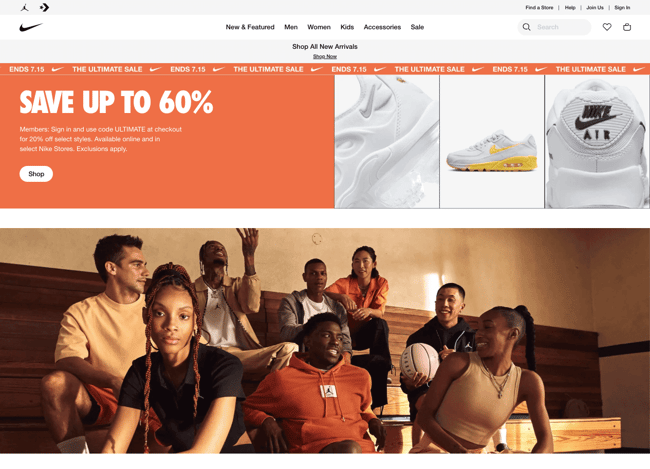 Source: Nike
Source: Nike
Blume
The headless architecture frees businesses from sticking to webpage templates and gives them the freedom to create any UI they want. This allows brands to create breathtaking, immersive customer experiences.
One great example is the main page of American beauty brand Blume, which introduced dynamic features like the sound of the ocean, creating a holiday vibe and engaging experiences such as a quiz about skincare or a newsletter with sex education lessons. An impressive strategy to win Gen Z shoppers’ attention.


Source: Blume
Allbirds
Known for its sustainable footwear, Allbirds has embraced headless commerce to enhance its e-commerce capabilities. By decoupling the front-end and back-end systems, Allbirds can easily integrate with various third-party services and deliver personalized product recommendations to its customers.
The headless architecture also enables Allbirds to optimize website performance, ensuring fast-loading pages and a smooth shopping experience for its environmentally conscious customers.

Source: Allbirds
Final Thoughts
63% of retail businesses surveyed by Salesforce that don’t have headless architecture today say they plan to implement it in the next two years.
Certainly, going headless is on the rise, but it is not mandatory because every business is different. Undoubtedly, headless offers great flexibility to create customer experiences, yet it requires a good understanding of its principles and a certain level of digital maturity.
Whether you want to jump on this path or not depends on where you are going with your business and what kind of experience your customers expect.
If you're considering an adventure with headless commerce and want to see how a single tool, namely a headless Product Information Management platform, works, check out our latest case study with Starboard, a global water sports company that has leveraged headless technology to deliver product information across multiple touchpoints efficiently with the support of Bluestone PIM.
You can also contact our advisors to get personalized tips and consultations on how this solution can help you achieve your omnichannel goals and create the eCommerce stack you need.



